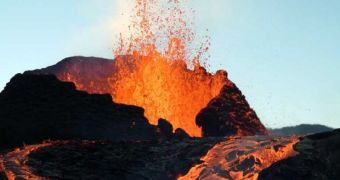Massive earthquakes can cause volcanoes to sink, two new studies published in the June 30 issue of the scientific journal Nature Geoscience show.
Oddly enough, each of the studies proposes another explanation for how and why volcanoes respond in this manner to powerful shakes.
The first team of scientists focused on the impact that Japan's 9M earthquake in 2011 had on natural landscapes, while the second team researched how volcanoes and their surrounding area had changed in the aftermath of the 8.8M earthquake that hit Chile in 2010.
Live Science reports that the areas found to have been affected by these major temblors were located at a distance of about 200 – 300 kilometers (125 – 185 miles) from the offshore earthquake fault.
It appears that, following said temblors, volcanoes and regions in their immediate proximity sank approximately 2 – 6 inches (5 – 15 centimeters).
Mathew Pritchard, a geophysicist presently working with Cornell University in Ithaca, NY, and his colleagues believe that the Chilean earthquake caused nearby volcanoes to sink because it helped release hydrothermal fluids that had been building up at their bottom for several decades.
Once these fluids were released, the ground rearranged and the volcano resting atop it sank.
On the other hand, Youichiro Takada of Kyoto University in Japan and his fellow researchers suspect that Japan's 2011 earthquake forced magma chambers found under volcanoes to work their way deeper into the Earth's mantle.
As the magma chambers descended, so did the volcanoes on top of them.
The scientists all agree that further research on the matter at hand is needed.
In the future, they wish to collect and analyze satellite data concerning how volcanoes have responded to earthquakes over the years. They also want to see how future earthquakes will affect landscapes in their proximity.
The researchers hope that such investigations will help them better understand the mechanism that governs this phenomenon.

 14 DAY TRIAL //
14 DAY TRIAL //